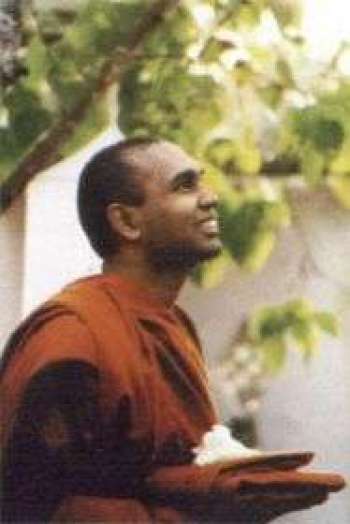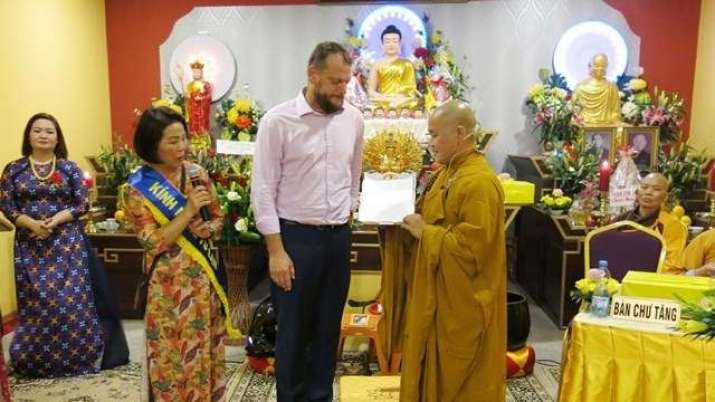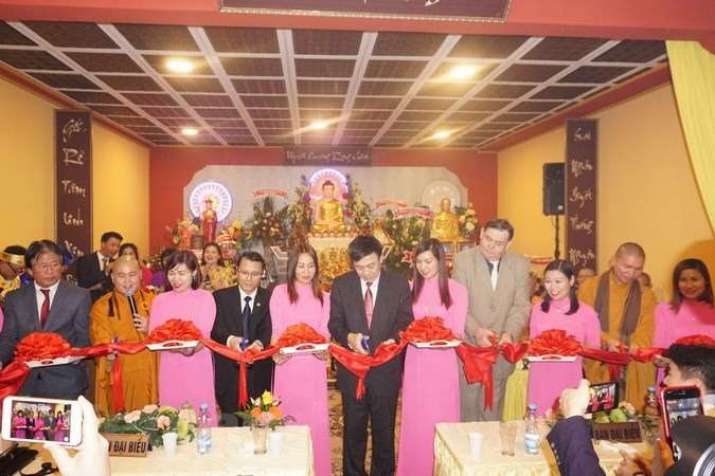The first Buddhist cultural center for the Vietnamese community in the Czech Republic city of Most has been upgraded to provincial status. At a ceremony featuring the director of Ustecky’s integration office, Jan Kubicek, the Vietnamese Buddhist Cultural Center was recognized for its value to the people of the region. Most is the capital of Most District in the Ustecky region, in the northwest of the Czech Republic bordering the German state of Saxony.
Speaking at the ceremony, the head of the pagoda, Venerable Thich Thong Dat, stressed the significance of the recognition, saying it was an honor for Buddhists in the Czech Republic. He further stated that the move demonstrated the interest of the regional authorities in the religious activities of Vietnamese people in the country.
Speaking on behalf of the government, Kubicek observed that the Vietnamese community had been active in preserving Vietnam’s cultural identity and introducing non-Vietnamese to their community. Kubicek said he hoped the center and community would continue to strengthen ties with other religious and civic organizations in the area and help Vietnamese youths understand their traditional culture and language.
The center was inaugurated this year in a ceremony on 5 January. At the time, the chairman of the region’s council for ethnic minorities, Pavel Vodsedalek, presented a certificate recognizing the cultural center, stating that among local ethnic minority groups, the Vietnamese community had carried out many activities to preserve and introduce its diverse culture. During the January ceremony, the Vietnamese ambassador to the Czech Republic, Ho Minh Tuan, thanked the Ustecky authorities for helping the Vietnamese community uphold their traditional culture and integrate smoothly into Czech society.
 Bhante Wimala. From radio.cz
Bhante Wimala. From radio.czIn 2011, Czech radio interviewed Bhante Wimala, a Sri Lankan monk living in Prague, on his thoughts about life in central Europe: “I was sent to the temple at 13 years old. I was ordained as a novice monk at 14. I have been in Prague now for almost 17 years. Just after the fall of communism I was invited to go to Russia. On my way, a friend invited me to speak to a small group of Buddhists in the Czech Republic who had not met a Buddhist monk at the time, so they were very excited. So when I came here I met a lot of young people who were very curious, enthusiastic, and dedicated, so I thought it would be worthwhile to try to do something in the Czech Republic,” he explained. (Czech Radio)
According to government statistics, the Czech Republic is a largely nonreligious society, with 34.5 per cent stating in a recent survey that they hold no religious beliefs. The nation’s statistics do not break down the largest category, which consists of more than 45 per cent who check the box for religious belief not stated, which would include the country’s Buddhists, Hindus, Muslims, Sikhs, and so on. The World Buddhist Directory lists 76 Buddhist places in the Czech Republic, though exact numbers of adherents are difficult to ascertain. Most Buddhists in the country are Vietnamese, with a minority of Buddhists being Czechs who have converted, generally to either Theravada or Vajrayana forms of Buddhism.

















